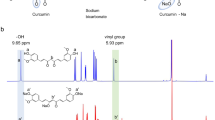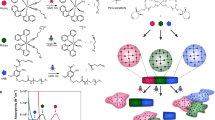Abstract
Ever since its development, tissue engineering has played a significant role in the medical arena with an ever-growing demand for various tissue donations. One crucial factor in conducting in vitro tissue engineering study is the construction of a desirable artificial three-dimensional (3D) hydrogel tissue scaffold to act as the extracellular matrix (ECM), meeting the complex requirements for specific cell cultures. Existing hydrogel scaffold fabrication techniques and systems utilized in constructing ECM are either twodimensionally limiting, hard to control the pattern morphologies or expensive and time consuming. In the present study, we introduce a simple, inexpensive method for selective patterning 3D porous microstructures. This technique-'two wavelength photo-initiation and photo inhibition competes’ is an extension of conventional photo-patterning method. Integrating with shadow mask, photo inhibition radicals were introduced to couple with the polymerization chains and terminate the photo crosslinking behavior at designed region, making 3D selectively patterning hydrogel feasible. High aspect ratio ridge with selectively inhibited porous structures and selectively patterned micro pillar were fabricated using this method within 1 minute. The in vitro cell test results indicate the patterned structures' good biocompatibility.
Similar content being viewed by others
References
Lanza, R., Langer, R., and Vacanti, J. P., “Principles of Tissue Engineering,” Elsevier, 1997.
Chen, A. A., Tsang, V. L., Albrecht, D. R., and Bhatia, S. N., “3-D Fabrication Technology for Tissue Engineering,” in: Biomems and Biomedical Nanotechnology, Ferrari, M. Desai, T., Bhatia, S., (Eds.), Springer, pp. 23–38, 2006.
Yoo, D.-J., “Heterogeneous Porous Scaffold Design for Tissue Engineering Using Triply Periodic Minimal Surfaces,” International Journal of Precision Engineering and Manufacturing, vol. 13, no. 4, pp. 527–537, 2012.
Hollister, S. J., “Porous Scaffold Design for Tissue Engineering,” Nature Materials, vol. 4, no. 7, pp. 518–524, 2005.
Ma, T., Li, Y., Yang, S. T., and Kniss, D. A., “Tissue Engineering Human Placenta Trophoblast Cells in 3-D Fibrous Matrix: Spatial Effects on Cell Proliferation and Function,” Biotechnology Progress, vol. 15, no. 4, pp. 715–724, 1999.
Wake, M. C., Patrick Jr, C. W., and Mikos, A. G., “Pore Morphology Effects on the Fibrovascular Tissue Growth in Porous Polymer Substrates,” Cell Transplantation, vol. 3, no. 4, pp. 339–343, 1994.
Khademhosseini, A. and Langer, R., “A Decade of Progress in Tissue Engineering,” Nature Protocols, vol. 11, no. 10, pp. 1775–1781, 2016.
Yoo, D.-J., “Heterogeneous Porous Scaffold Design for Tissue Engineering Using Triply Periodic Minimal Surfaces,” International Journal of Precision Engineering and Manufacturing, vol. 13, no. 4, pp. 527–537, 2012.
Yoo, D.-J., “Computer-Aided Porous Scaffold Design for Tissue Engineering Using Triply Periodic Minimal Surfaces,” International Journal of Precision Engineering and Manufacturing, vol. 12, no. 1, pp. 61–71, 2011.
Tsang, V. L. and Bhatia, S. N., “Three-Dimensional Tissue Fabrication,” Advanced Drug Delivery Reviews, vol. 56, no. 11, pp. 1635–1647, 2004.
Gross, B. C., Erkal, J. L., Lockwood, S. Y., Chen, C., and Spence, D. M., “Evaluation of 3D Printing and Its Potential Impact on Biotechnology and the Chemical Sciences,” ACS Publications, vol. 86, no. 7, pp. 3240–3253, 2014.
Choi, J. H., Jin, H. K., Bae, J.-S., Park, C. W., Cheong, I. W., and Kim, G. M., “Fabrication of Detachable Hydrogel Microplates for Separably Patterned Cell Culture,” International Journal of Precision Engineering and Manufacturing, vol. 15, no. 5, pp. 945–948, 2014.
Han, L.-H., Suri, S., Schmidt, C.E., and Chen, S., “Fabrication of Three-Dimensional Scaffolds for Heterogeneous Tissue Engineering,” Biomedical Microdevices, vol. 12, no. 4, pp. 721–725, 2010.
Woodfield, T., Guggenheim, M., Von Rechenberg, B., Riesle, J., Van Blitterswijk, C., and Wedler, V., “Rapid Prototyping of Anatomically Shaped, Tissue-Engineered Implants for Restoring Congruent Articulating Surfaces in Small Joints,” Cell Proliferation, vol. 42, no. 4, pp. 485–497, 2009.
Mihaylova, E., “Holography-Basic Principles and Contemporary Applications,” InTech, pp. 45–47, 2013.
Lu, Y. and Chen, S., “Projection Printing of 3-Dimensional Tissue Scaffolds,” in: Computer-Aided Tissue Engineering, Liebschner, M., (Eds.), Springer, vol. 868, pp. 289–302, 2012.
Pfister, A., Landers, R., Laib, A., Hübner, U., Schmelzeisen, R., and Mülhaupt, R., “Biofunctional Rapid Prototyping for Tissue-Engineering Applications: 3D Bioplotting Versus 3D Printing,” Journal of Polymer Science Part A: Polymer Chemistry, vol. 42, no. 3, pp. 624–638, 2004.
Chua, C. K., Leong, K. F., and Lim, C. S., “Rapid Prototyping: Principles and Applications,” World Scientific, 2010.
Vatani, M., Lu, Y., Engeberg, E. D., and Choi, J.-W., “Combined 3D Printing Technologies and Material for Fabrication of Tactile Sensors,” International Journal of Precision Engineering and Manufacturing, vol. 16, no. 7, pp. 1375–1383, 2015.
Ha, Y.-M., Park, I.-B., Kim, H.-C., and Le, S.-H., “Three-Dimensional Microstructure Using Partitioned Cross-Sections in Projection Microstereolithography,” International Journal of Precision Engineering and Manufacturing, vol. 11, no. 2, pp. 335–340, 2010.
O'Neill, P., Ben Azouz, A., Vázquez, M., Liu, J., Marczak, S., et al., “Advances in Three-Dimensional Rapid Prototyping of Microfluidic Devices for Biological Applications,” Biomicrofluidics, Vol. 8, No. 5, Paper No. 052112, 2014.
Hong, M.-P., Kim, W.-S., Sung, J.-H., Kim, D.-H., Bae, K.-M., and Kim, Y.-S., “High-Performance Eco-Friendly Trimming Die Manufacturing Using Heterogeneous Material Additive Manufacturing Technologies,” International Journal of Precision Engineering and Manufacturing-Green Technology, vol. 5, no. 1, pp. 133–142, 2018.
Lu, C., Qi, M., Islam, S., Chen, P., Gao, S., et al., “Mechanical Performance of 3D-Printing Plastic Honeycomb Sandwich Structure,” International Journal of Precision Engineering and Manufacturing-Green Technology, vol. 5, no. 1, pp. 47–54, 2018.
Lu, C. and Lipson, R. H., “Interference Lithography: A Powerful Tool for Fabricating Periodic Structures,” Laser & Photonics Reviews, vol. 4, no. 4, pp. 568–580, 2010.
Fischer, J. and Wegener, M., “Three-Dimensional Optical Laser Lithography Beyond the Diffraction Limit,” Laser & Photonics Reviews, vol. 7, no. 1, pp. 22–44, 2013.
Xu, D., Chen, K. P., Ohlinger, K., and Lin, Y., “Nanoimprinting Lithography of a Two-Layer Phase Mask for Three-Dimensional Photonic Structure Holographic Fabrications Via Single Exposure,” Nanotechnology, Vol. 22, No. 3, Paper No. 035303, 2010.
Zhu, S., Fu, Y., and Hou, J., “Lithography: Principles, Processes and Materials,” in: Nova Science Publishers, Hennessy, T. C., (Ed.), pp. 119–132, 2012.
Scott, T. F., Kowalski, B. A., Sullivan, A. C., Bowman, C. N., and McLeod, R. R., “Two-Color Single-Photon Photoinitiation and Photoinhibition for Subdiffraction Photolithography,” Science, vol. 324, no. 5929, pp. 913–917, 2009.
Park, S.-Y., Lee, J.-S., Choi, B.-H., Ahn, I. H., and Moon, S. K., “Modeling and Observation of Compressive Behaviors of Closed Celullar Structures Using Central Voronoi Tessellation Concepts,” International Journal of Precision Engineering and Manufacturing, vol. 16, no. 12, pp. 2459–2465, 2015.
Author information
Authors and Affiliations
Corresponding author
Rights and permissions
About this article
Cite this article
Hu, K., An, J. & Yoon, YJ. Two-Wavelength, Photo-Initiation and Photo-Inhibition Competing for Selective Photo-Patterning of Hydrogel Porous Microstructures. Int. J. Precis. Eng. Manuf. 19, 729–735 (2018). https://doi.org/10.1007/s12541-018-0087-y
Received:
Revised:
Accepted:
Published:
Issue Date:
DOI: https://doi.org/10.1007/s12541-018-0087-y




